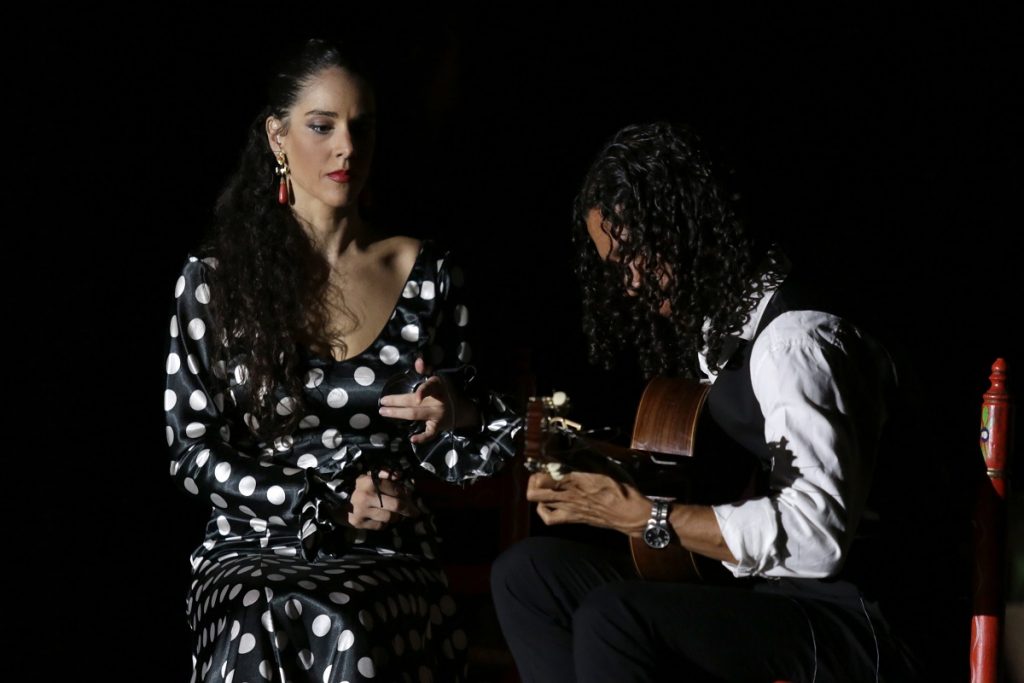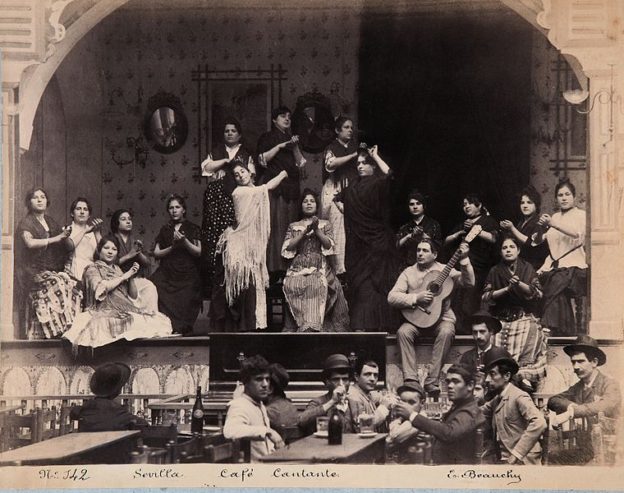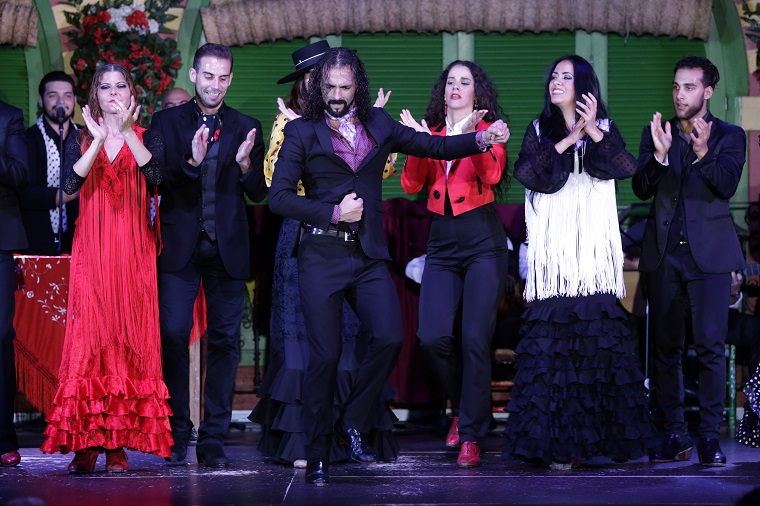
To enjoy a flamenco show, it is best to visit a flamenco tablao. The atmosphere that is generated and the proximity to the artists make these spaces special to watch a live show. They keep the spirit of this art alive, welcoming flamenco singing and dancing daily to the delight of the audience.
Tablaos exist in different corners of the world, but Andalusia is a reference point of this flamenco tradition. It is in this region, where we find the origin of the flamenco tablao that, although it seems that it has always existed, the reality is very different. Let’s know about the history of these emblematic venues.
The tablaos have their peak in the mid-nineteenth century with the evolution of the singing cafes. Also known as “Cathedrals of the Duende”, the role of tablao flamenco has been decisive for the evolution and popularization of flamenco art.
The combination of Andalusian music and dance gave birth to the artistic genre that is so well known today, an art that has the influences and contributions of different cultures, among which the gypsy stands out, although it has not been the only one.
At first, flamenco singing and dancing performances were carried out at parties or private celebrations. The emergence of the cafés singers was crucial to give visibility to flamenco art, since they were the first halls where the public went to see live performances by flamenco artists.

And if you wonder what those primitive cafés singers were like, you’re just going to need a little imagination to find the answer. Think of a spacious room, with decorative elements and chairs and tables for the public. In the center of the room was installed a table, the tablao, where the artists would go up for the performance. Something very similar to the premises that exist now.
Those first cafés singers emerged in the so-called Golden Age of Flamenco, a period between 1860 and 1919. Why is this period known as? Because they were years in which flamenco art evolved in all its facets, in dance, singing and music. This era was also very important to set the styles and forms of flamenco art, as it is known today.
In the Golden Age of Flamenco, dance was undoubtedly the most benefited. If at the beginning, the cante took the performances, little by little the dance became the main attraction for the assistants to these old cafés singers. The passion of the dancers on the stage was something that did not go unnoticed by the public, which is why the dance started to take away the prominence of singing.
The guitar was another element that evolved and gained visibility. It became the key accompaniment for singing and dancing at that time. Now it would be unimaginable to think of a flamenco show in which this instrument is not present, but originally the cante was accompanied only by the palms.
Another important milestone that influenced the evolution of the tablaos was the emergence of the flamenco schools of Cádiz, Jerez de la Frontera and that of the Triana neighborhood in Seville. These schools were vital for the flamenco dance, which they promoted in such a way that they began to differentiate themselves and stand out among other Spanish dances.
Therefore, in this first stage, the flamenco world evolved in such a way that it managed to pass from an art of minorities to an art open to the public.
Another period of interest in the evolution of this art was that between 1910 and 1955. Known as the Flamenco Opera, this stage is marked by the emergence of great flamenco singers, who promoted this flamenco aspect in all its styles, from the round-trip cantes to the fandangos, which reached great prominence, turning the guitar into the indispensable accompaniment to any performance of flamenco singing.

Since 1955, the evolution of the flamenco tablao is already unstoppable, with Andalusia as the capital and cradle of flamenco, due to the number of venues that emerged and the frequency with which these performances were held. But the flamenco art, took the jump outside the Andalusian borders and tablaos arose by other points of Spain, like Madrid and Barcelona, among others.
In the 60s, these places became centers of cultural leisure frequented by personalities from the world of politics and show business. Its boom was such that the flamenco tablao became a tourist attraction more, to which also succumbed great Hollywood stars during his visit to Spain.
During this, let’s say ‘boom’ of the tablaos, there emerged great flamenco artists of singing, dancing and guitar, as was the case of the singers Camarón de la Isla and Enrique Morente; the dancers Farruco and Matilde Coral; or the guitarist Paco de Lucía, among many other artists.

Currently, flamenco is a universal art and recognized anywhere in the world. The flamenco tablaos continue to be the ‘cathedrals of the duende’, which preserve this art with daily shows of singing, dancing and live guitar.
Although there are many places of this type in different corners of the world, there are places where it is essential to go to a flamenco tablao. This is the case of Seville, a city that maintains an idyll with this art since the 18th century. Here came the first cafés singers, of which today the tablaos that dot the Andalusian capital are direct heirs.
Among them stands El Palacio Andaluz, an emblematic building whose interior keeps the aesthetics of the old Sevillian cafés singers, with spaces decorated with style and Andalusian stamp. An ideal place to enjoy a flamenco show, while having a drink or enjoying a dinner.
Therefore, if you want to feel flamenco art in all its essence, follow our recommendation and visit a flamenco tablao. You will live a unique experience. Do not tell it to you!
© 2024 El Palacio Andaluz. All rights reserved.